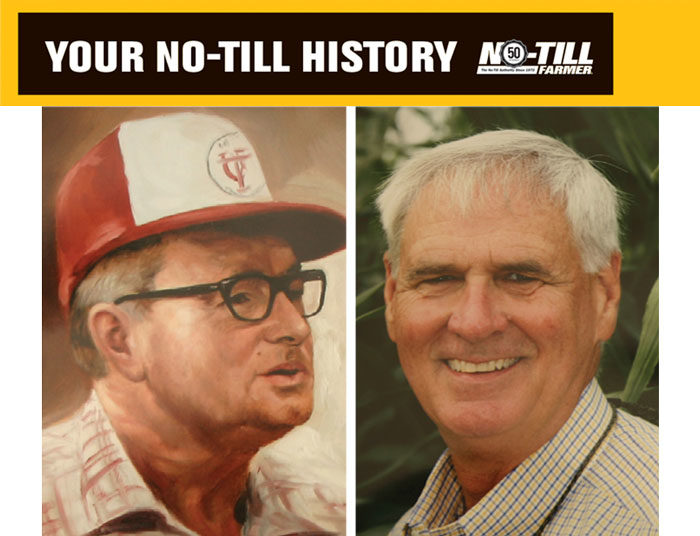No-Till Farmer
Get full access NOW to the most comprehensive, powerful and easy-to-use online resource for no-tillage practices. Just one good idea will pay for your subscription hundreds of times over.

Dr. Tom McCutchen (l) served as the first superintendent at UT AgResearch Center at Milan, Tenn., from 1963-1983, followed by his friend Dr. John Bradley (r) from 1984-1997.
Every no-tiller in the Southeast knows of University of Tennessee’s (UT) “Milan No-Till Field Day.” The AgResearch & Education Center at Milan was established in 1962 on former Milan Army Ammunition Plant land. Today, nearly 700 acres of cropland are used for research.
Thanks to the leadership of the first superintendent Dr. Tom McCutchen, a focus on no-till research to save Western Tennessee agriculture also led to no-till’s most influential field event in 1981. It brought at-scale, production-oriented no-till knowledge to the forefront where it could not be ignored.
John Bradley, a "No-Till Living Legend" and 1996 No-Till Innovator of the Year (Research & Education category, for his work at Milan) was there for the beginning of no-till in the state. At first, he was as an extension agent in Lake County, Tenn., near McCutchen's family farm. The friends collaborated often, including studying the no-till practice born in Western Kentucky the same year that UT Milan opened. After McCutchen died in 1983, Bradley was called on to oversee the center and Field Day.
The tremendous soil erosion losses in Western Tennessee had McCutchen examining reduced tillage. “In the late 70s, West Tennessee’s 21 counties had the highest erosion rates in the nation,” Bradley says. “We were losing an average of 14 tons of soil per acre annually and a lot of fields were losing up to 80 tons.”
Bradley recalls a late 1970s “Save Our Soil” field day that highlighted terracing on a demonstration farm to…